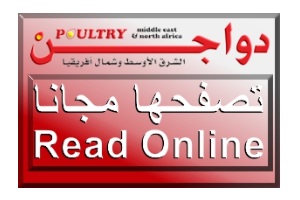Mycotoxins, especially aflatoxins are a constant concern for agriculture. Some weather patterns, such as were seen in European throughout 2015, have put the industry on high alert.
Weather influences the average aflatoxin-producing potential of the fungi and contamination can occur both during crop development and after crop maturation. Interaction of aflatoxin-producers with agronomic practices and weather events at specific crop stages determine the magnitude of contamination through effects on pests, crops, and timing of activities. Weather events that favor high contamination during crop development may suppress contamination after crop maturation either prior to harvest or during post-harvest handling and storage.
Stated Radka Borutova, Business Development Manager at Nutriad: “The heat wave in European in late June and early July broke several records. Hot and dry weather conditions are associated with increased aflatoxin and fumonisin production by the fungi from Aspergillus and Fusarium species. Weather is therefore the most important factor in determining whether aflatoxin and fumonisin contamination will be a problem or not. “
Uncertain mycotoxin situation in 2015 led Nutriad to conduct several mycotoxin surveys in different European countries (UK and Ireland, Poland, Spain). Each survey was conducted on 60-70 samples of wheat or maize. The Spanish Nutriad Mycotoxin Survey, executed in Q4 2015, covers 60 locally produced maize samples from across Spain. More than 400 analyses were conducted to test for the occurrence of the seven mycotoxins most frequently found in agricultural commodities that are intended for animal feed production. The survey provided an insight into the incidences of aflatoxin B1 (AfB1), zearalenone (ZEN), deoxynivalenol (DON), T-2 toxin, fumonisin B1 (FB1), fumonisin B2 (FB2) and ochratoxin A (OTA) across all regions of Spain. The 60 samples were collected either directly from the farms or from animal feed production sites immediately after the harvest when the probability that some storage mycotoxins such as OTA would have developed was low.
All seven mycotoxins were analyzed by liquid chromatography tandem mass spectrometry (LC MS/MS). For the purpose of data analysis, non-detection levels were based on the limits of quantification (LOQ) of the test method for each mycotoxin: AfB1 < 0.5 μg/kg; ZEN < 10 μg/kg; DON < 75 μg/kg; FB1< 125 μg/kg; FB2< 50 μg/kg OTA < 1 μg/kg and T-2 toxin < 4 μg/kg.
The results from the survey showed that 55% of the maize samples were contaminated with DON and 11% with AfB1. Only 1.6 % of the samples contained T-2 toxin.The majority of wheat samples were contaminated with FB1 (90%) and FB2 (80%). Most of the recovered mycotoxins were in concentrations regarded as medium (>LOD but below EU recommendation levels) while the highest concentration of DON and FB1 found reached 6500 μg/kg and 11500 μg/kg respectively. Interestingly, 31.6% of the samples contained zearalenone, a mycotoxin which affects reproductive performance in breeding animals. Its maximum concentration reached 990 μg/kg, a significant level. As expected, only a few samples were contaminated with OTA, a known typical storage mycotoxin. One sample of maize exceeded the maximum EU permitted concentration of aflatoxin B1 (20.2 μg/kg) (COMMISSION REGULATION (EU) No 574/2011).
Table 1 – Mycotoxin contamination of maize in Spain
AfB1 DON ZEN FB1 FB2 T2-toxin OTA
Number of tests 60 60 60 60 60 60 60
% of positive 11 55 31.6 90 80 1.6 3.3
Average of positive [μg/kg] 18.3 823.4 104.7 1840.37 495.70 8.04 1.7
Maximum [μg/kg] 20.2 6500 990 11500 5280 8.04 1.93
The maize mycotoxin survey conducted by Nutriad concluded that 2015 harvest of maize in Spain is of concerning quality.
Based on the results of this survey conducted immediately post-harvest, it is the belief that the quality of 2015 maize crop in Spain should not be considered safe for inclusion into finished feed rations for all animal species.Maize as the most important feed ingredient will likely be contaminated with the mixture of deoxynivalenol, aflatoxins and fumonisins. Higher incidence of aflatoxins in 2015/2016 will present a challenge mainly for dairy producers and production of aflatoxin M1 free milk. Fumonisins are very toxic for swine and horses.
The last possible line of defense is the detoxification of mycotoxins in vivo. The addition of proven mycotoxin deactivators to animal feeds is a very common method to prevent mycotoxicosis and is an effective strategy to keep mycotoxin risk low under all conditions. It is highly recommended to apply an effective mycotoxin deactivator which offers an opportunity to significantly improve animal health, performance, productivity and profit impaired by mycotoxins. Depending on the target performance, different mycotoxins can bemoreor less problematic. Therefore, using different products for different animal groups is seen more and more.
Nutriad delivers products and services to over 80 countries through a network of own sales offices and distributors. Supported by 4 application laboratories and 5 manufacturing facilities on 3 continents. Find out more at http://nutriad.com/




















